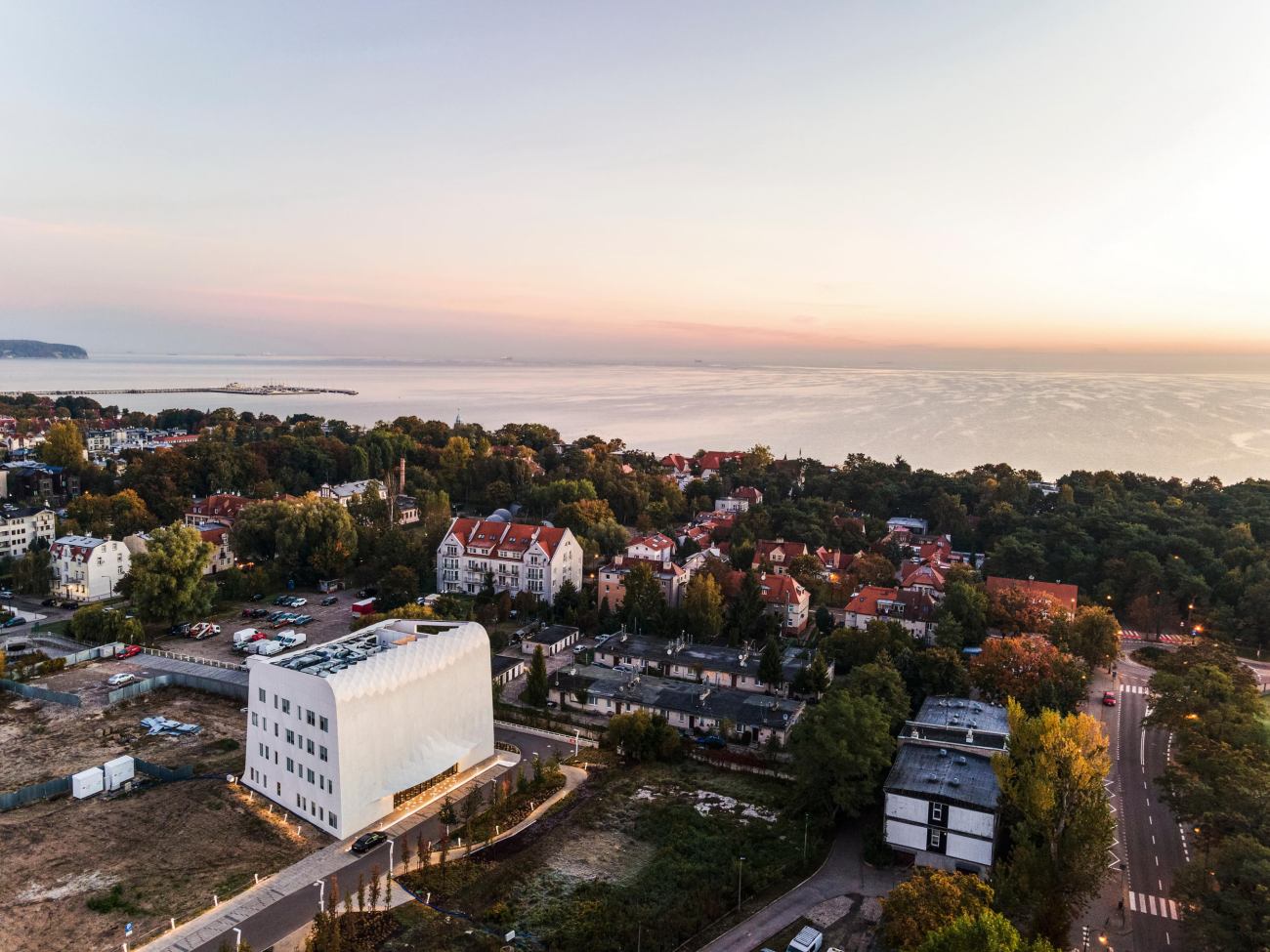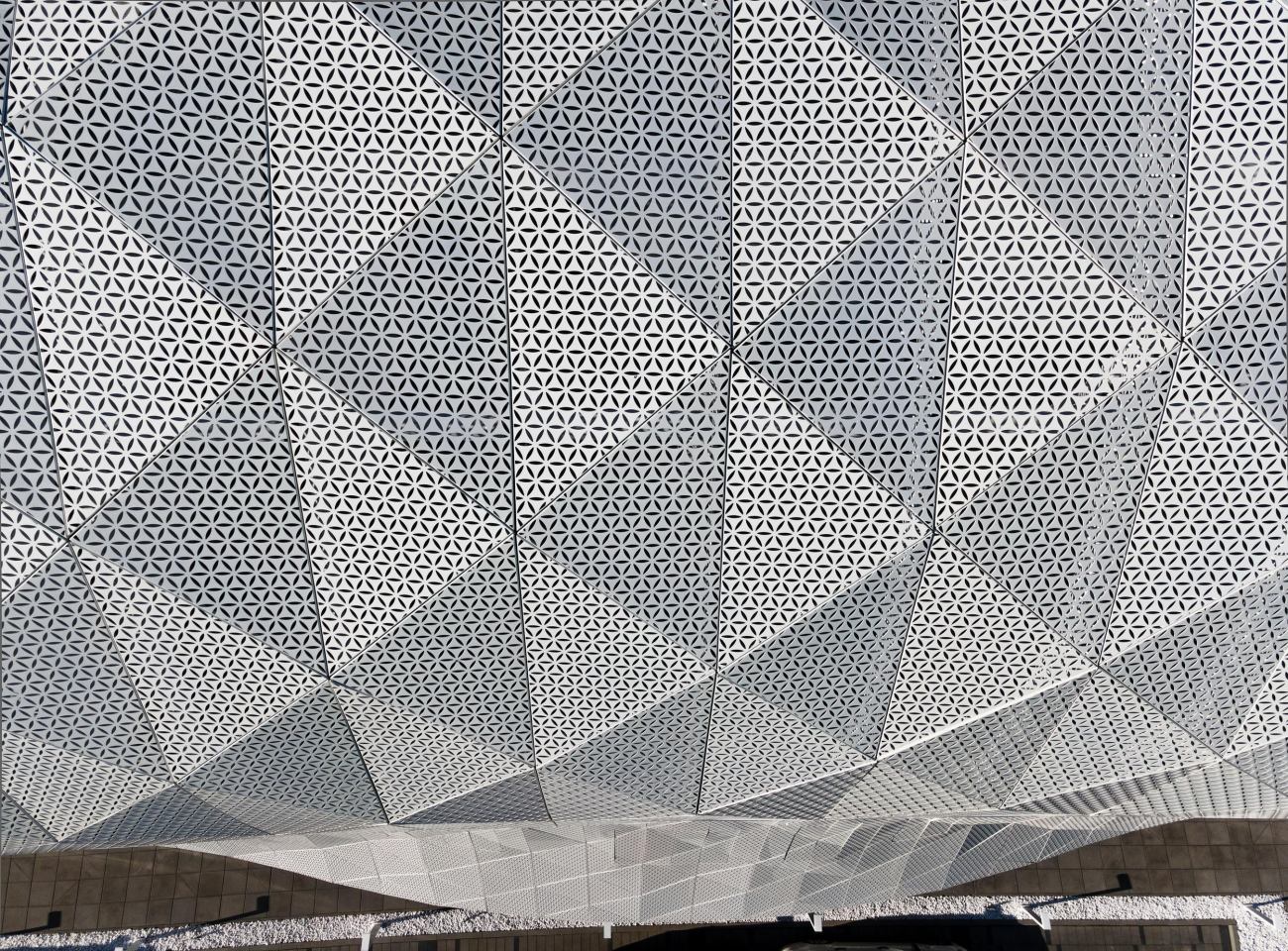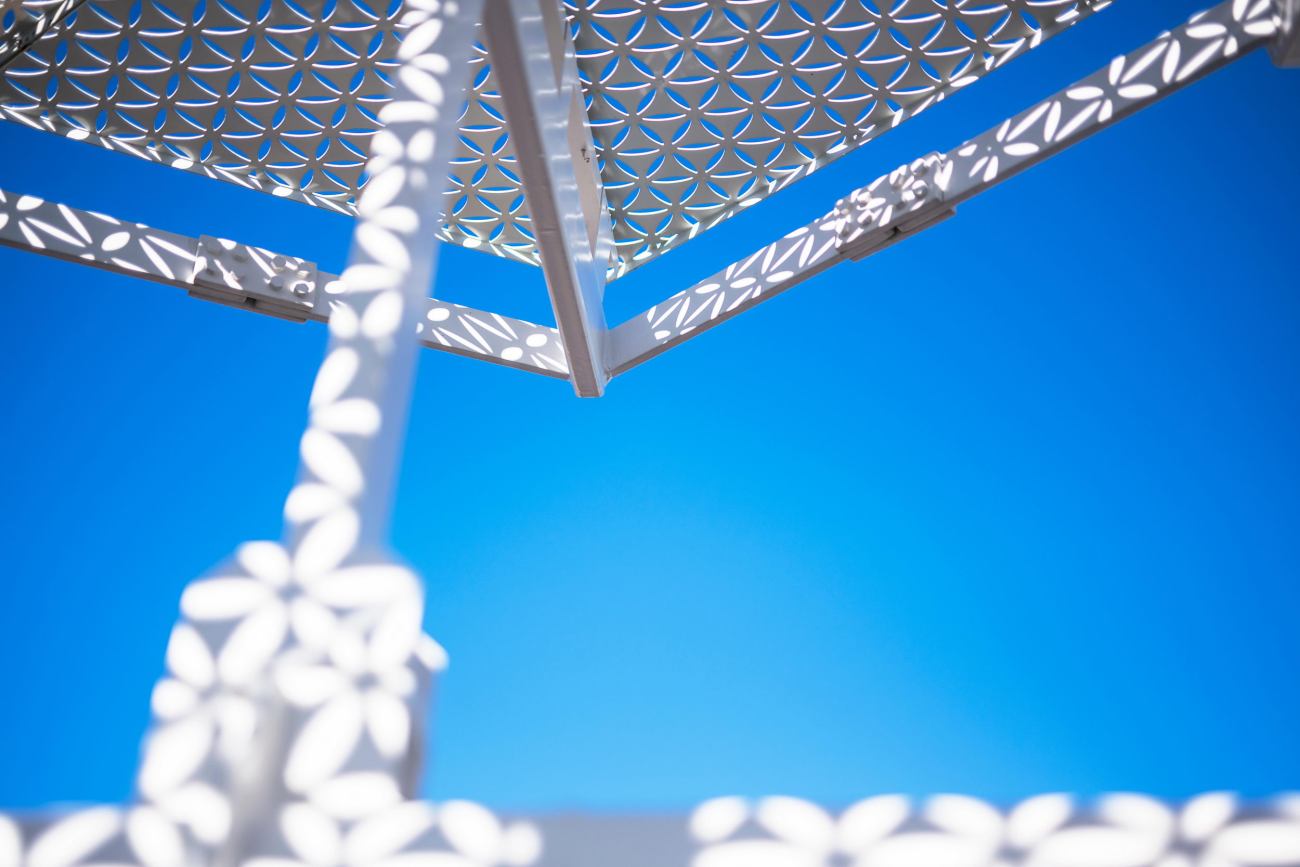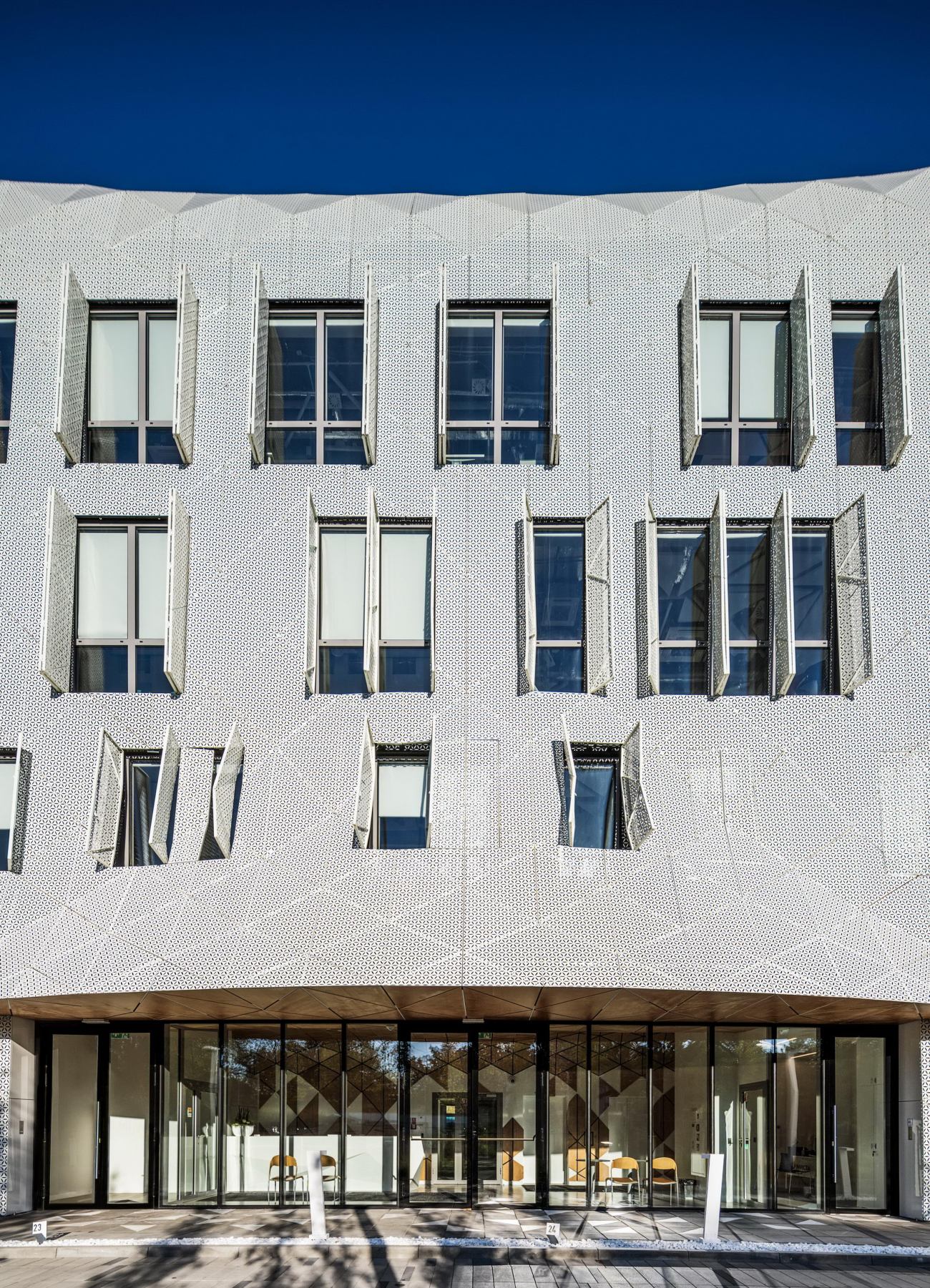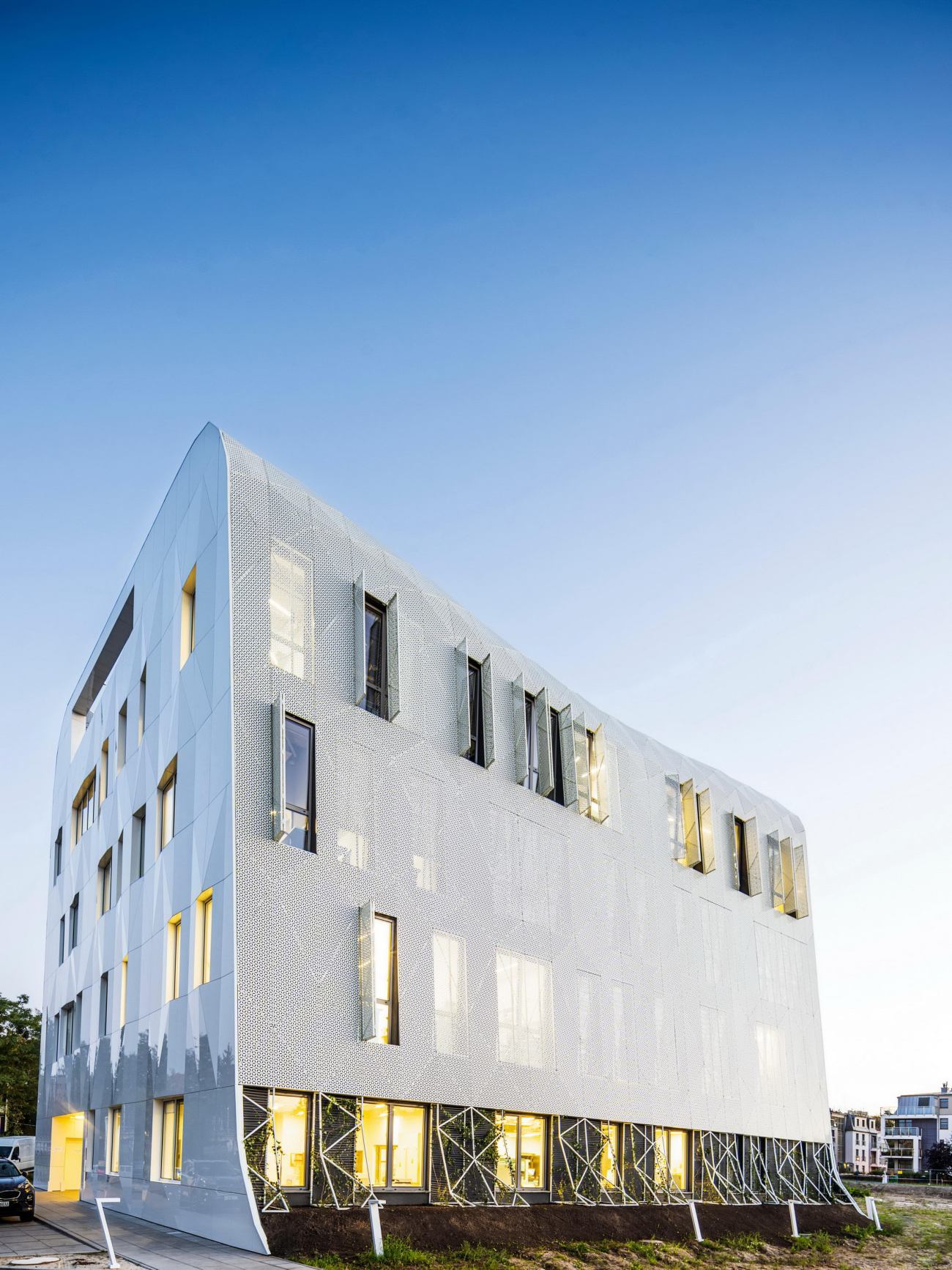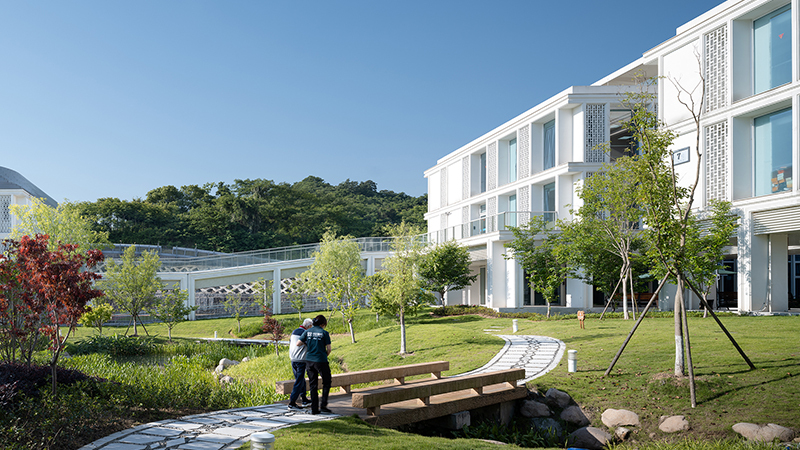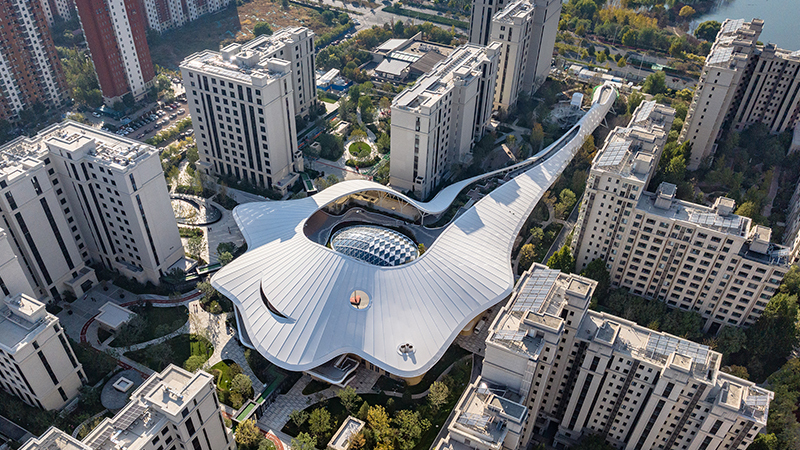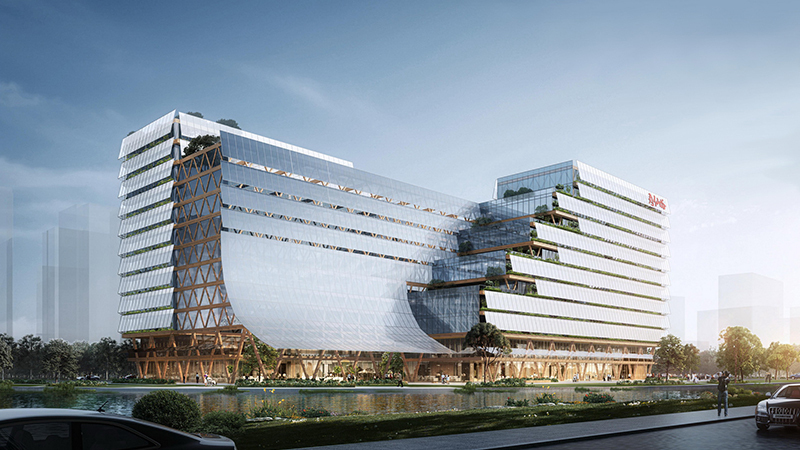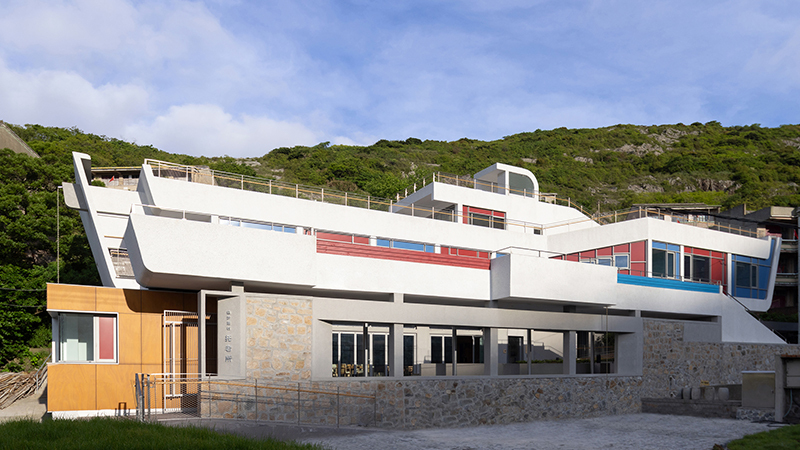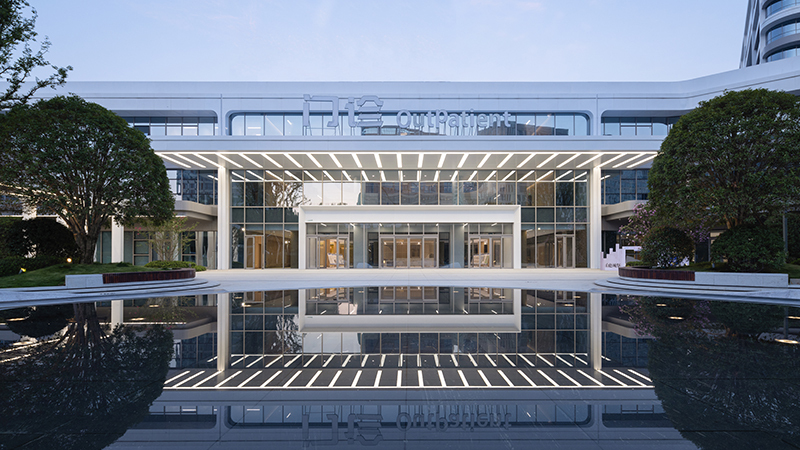"Those who live by the sea can hardly form a single thought of which the sea would not be part.”
——Hermann Broch
Wave One距离波罗的海400米,坐落在历史上被称为疗养胜地小镇欧洲家庭中心。设计理念源于海浪的复杂性与当地在建筑立面上雕刻的装饰细节。建筑师创造了一座由五座相互关联的建筑体量组成的场地,让人联想到波浪。Wave One是经过漫长的设计和施工过程建造的第一座建筑,其功能包括专门的医学实验室、SARS-CoV-2测试实验室、研发中心和管理空间。
Wave One, of the European Center for Families, is located 400 meters from the Baltic Sea in what is historically known as a health resort town. The concept is derived from the complexity of sea waves and the local vernacular of carved ornamental detailing on facade elements. Drawing upon this, the architects created a site concept composed of five inter-related buildings, reminiscent of waves. Wave One, the first to be built after a lengthy design and construction process, encompasses specialized medical laboratories, including SARS-CoV-2 testing labs, a research & development center, and administration spaces.
 |  |
白色穿孔立面包裹着Wave One,其部分设计灵感来自Pierre Carreau的一组名为AquaViva的照片。建筑师分析了摄影师拍摄的海浪的几何复杂性。在凝结在时间中冻的拱形3D形式翻译成一种建筑语言,塑造了建筑的最终形式。立面共有1362个穿孔三角形面板,像波浪一样在建筑物的顶部弯曲。
The white perforated facade, enfolding Wave One, was partly inspired by a series of photographs by Pierre Carreau, titled AquaViva. The architects analyzed the geometric complexity of the sea waves captured by the photographer. The arched 3D forms, frozen in time, were translated into an architectural language that shaped the building’s final form. With 1,362 perforated triangular panels, the facade, just like a wave, bends at its crest, the top of the building.
穿孔面板是一种具有象征意义的形式,分别意指:
1)当地将木雕作为建筑立面装饰细节的传统。
2)生命之花,这是一种古老的图案,被认为具有治愈能力,与建筑的医疗保健功能相呼应。
The perforated panels are a symbolic gesture referencing:
1) the local tradition of placing ornamental details carved in wood on building facades, and
2) flower of life, an ancient motif credited with healing powers, befitting the healthcare function of the investment.
▽穿孔面板细节
立面穿孔为建筑提供了良好的通风和透气功能,特别是外墙的顶部区域。东西立面采用立体造型,倾斜的烧结白色陶瓷三角形面板将阳光反射到人行道上。它们创造出瞬息万变的细节,使建筑物的周围环境充满活力。
The perforations made it possible to elicit an airiness and dissipation of the building in space, particularly visible in the upper realm of the facade. The East/West elevations take on 3D form, with triangular panels of sintered white ceramics skewing and reflecting sunlight onto the pavement. They create a transient detail, enlivening the immediate surroundings of the building.
 |  |
同样,曲率——即对海浪凹陷部分的引用也启发了建筑的造型设计。南入口处完全弯曲的顶篷由建筑师进行数字3D建模,然后提交给当地承包商进行一比一的模型制作,并在现场进行最终的调整,以便与相邻面板形成无缝连接,并确保穿孔图案的流动性。这是一项艰巨的任务,因为曲率和垂直方向的偏差沿着立面的两条轴线产生,并且不排除可操作百叶窗的额外存在。
Equally, curvature - a reference to the concavity of a sea wave - inspired the shape of the building mass. The amply curved canopy over the South entrance was digitally 3D modelled by the architects, and was then submitted to the local contractors for the preparation of one-to-one mock-ups. Adjustments were made on-site in order to create a seamless union with adjacent panels, and to ensure the fluidity of the perforated pattern. This was a painstaking task, given that curvature and deviation from the vertical are along both axes of the facade, not excluding the additional presence of operable shutters.
热量管理Heat management
在这座技术设备饱和度如此之高的建筑中,其中许多设备必须每天24小时工作,因此保护房间免受过热非常重要。建筑物内过高的温度不仅会引起生理上的不适,而且还会导致实验室设备的突然关闭。继而引发分析周期的不连续性,以及珍贵研究材料的损失。为了规避这种风险,并避免扩大冷却系统,团队使用了许多被动解决方案。例如,建筑师放弃了大型玻璃表面。相反,通过规划窗户的表面积为实验室房间提供了最佳的自然采光条件。并将技术设施产生最多热量的房间放置在北侧,。
In a facility with such a high saturation of technological equipment, many of which have to work 24 hours a day, it is very important to protect the rooms from overheating. Overly high temperatures inside the building not only cause discomfort, but can also trigger a sudden shutdown of laboratory equipment. This, in turn, usually leads to the discontinuity of the analysis cycle, as well as the loss of the precious research material. In order to avoid such threats, and to prevent enlarging the cooling systems, a number of passive solutions were used. For instance, the architects resigned from large glass surfaces. Instead, the surface area of the designed windows provides optimal natural lighting conditions for the laboratory rooms. The largest room, in which the technological line generating the greatest amount of heat was placed, is located on the North side.
▽建筑室内
▽楼梯细节
此外,建筑立面由两层组成。立外层充当建筑物上的连续保护屏障,保护外墙免受加热,从而防止内部房间过热。这种屏障也对其周围环境具有积极作用,可有效防止城市热岛现象的产生。
Furthermore, the building façade consists of two layers. The outer layer of the facade acts as a continuous protective barrier over the building, shielding the exterior wall from heating up, and thus preventing the interior rooms from overheating. This barrier also has a positive effect on its surroundings and guards against urban heat island phenomenon.
Technical sheet
Building name: Wave One
Complex name: The European Center For Families - Sopot, Poland
Address: Europe, Poland, Sopot, 64 Polna Str.
Function: healthcare, medical laboratories, research laboratories, offices
Surface area: 11,180 m2
Ground surface, phase 1: 4,230 m2
Building footprint: 639 m2
Building area: 3,160 m2
Number of levels: 1 underground, 4 above ground, terraces.
Building height: 20,0 m=highest point of facade; 15,93 m=at recreational terrace.
Construction: IV.2019-IX.2021 (including interior finishes)
Investor: Invicta Clinics and Medical Laboratories
Architects, project team: Adam Białobrzeski, Adam Figurski, Maria Messina
Assistant architects: Anna Miłosz, Mikołaj Szewczyk
Concrete structure engineers: Kappa Projekt
Steel structure engineers: PF Projekt
Electrical/Sanitary engineers: Profen
更新日期:2022-06-21 18:17:01
非常感谢 FAAB 带来的精彩项目, 查阅更多Appreciations towards FAAB for sharing wonderful work on hhlloo. Click to see more works!
